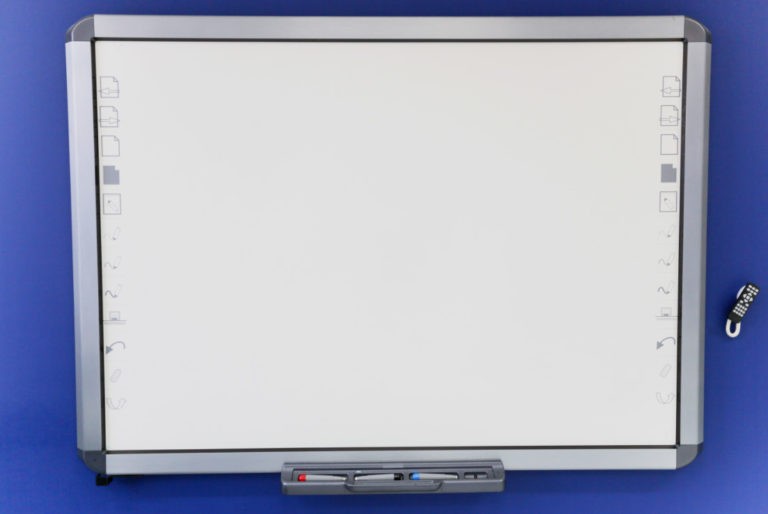What is a Smart Board?
Imagine if you will, one of the most powerful chalkboards ever; that is what you have in a smart board. Also sometimes known as an interactive whiteboard or interactive board, this is one of the most powerful technological mediums to deliver information to and interact with students.
Smart boards can act as a computer touchscreen, a touchpad that is controlled with a projector, a place for students to write on the board like a chalkboard, a tablet for you, and most of all, another great way to get more students involved in your classroom.
Smart boards are pre-installed with software that helps you interact with your lesson plans with your students ranging from lessons on fractions to provide a visual of a pie being divided by different amounts to having students come to the board and playing Jeopardy. Combine a good old fashioned chalkboard, a touchscreen computer, and interactive lessons all into one and you have a smart board.
How to Use a Smart Board in Your Class
With eighth and half years in school administration, I have completed over 1000 walkthroughs and seen all subjects in high school. Using that information and some ideas from teachers who I have worked with before, here are some of the best ways I have seen to use a smart board in your classroom.
Checking for Understanding
Picture a high school math class with 25 students in the room. The last five minutes of class a teacher could call a student up to the smart board and have them work on the key problem of the day; the problem could contain all the key points that the students needed to learn that day. Then after the student works the problem for the entire class, the teacher calls on other students to make sure that the student did the problem correctly and then asks them to explain why it is correct.
Do this two or three times and the teacher will be able to quickly see if the class has learned what they need to learn that day. This is a great way to make sure the class is ready for the next step or if the teacher needs to go back and re-teach something. It also provides a great visual for all the students to see the math being worked. This could be done at lower levels too where students have the ability to write on the board.
Jeopardy
I saw a teacher do this often as a review for her biology vocabulary quizzes. The teacher was able to develop a powerpoint and project it on a smart board where the students could touch the screen for a review like the game Jeopardy. This way the teacher could easily understand how the students were doing (checking for understanding) and the students would come up the board and touch the question they wanted to answer for their team. This kept students involved by using teams and by also having them move around the room. The teacher was able to know if the students were ready or not for their quiz. There are smart boards that come installed with other games, but this was a great example of a review that all students could be involved with during class.
Card Sort
This was another idea from a biology class, but easily could be done in any subject. The teacher developed a way for the students to come to the board and move around with what looked like text boxes. Some boxes had the vocabulary words and other boxes had the meaning of the vocabulary words. It became really exciting when some students were timed in their sorting of categories. Again, here the teacher can see how well the students understand the content but also have a little fun with their students.
Student Engagement
This idea is great at any level; a teacher used an installed Activity Builder and made a spinning wheel (similar to the Wheel of Fortune) that had each student’s name on the wheel. Instead of using choral questions to the class (which instructionally is a pet peeve of mine because some students can ‘hide’ behind the students that answer everything), the teacher would spin the wheel and see which student would answer the next question. The teacher mentioned that this kept his students on their toes and ready because they never knew who was next.
Visuals for Young Learners
A couple of elementary teachers have found that during the COVID era of education, this is a great way to let students see something that they might usually have in their hands. For example, using a balance to compare numbers. Using a website that shows a balance with numbers on the left and right of zero, the students can use the touchscreen capability and move the markers around on the balance board. Students have to balance the right and left based on the value of the numbers. For example if the number six is marked on the right side, on the left side, the numbers four and two are marked so the balance is even.
Using a smart board comes down to a couple of major factors. First, you might need some professional development to get going, and then second, find some time to play around with this amazing, interactive technology that has so many capabilities.
If you can get the time, the training, and create the opportunity, there are thousands of possibilities in your classroom with a smart board.




